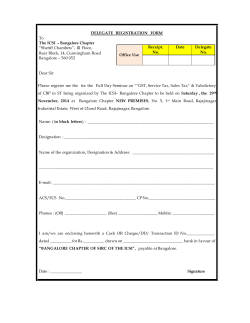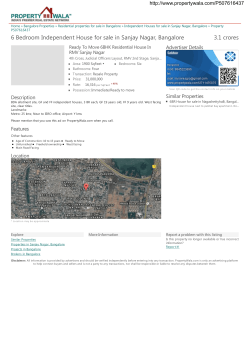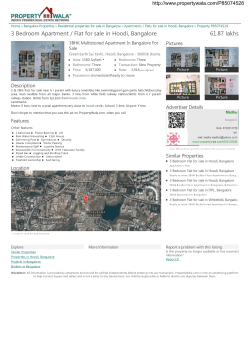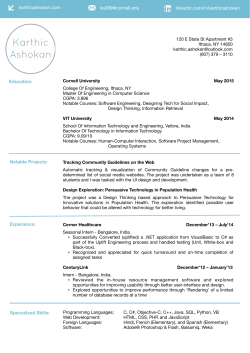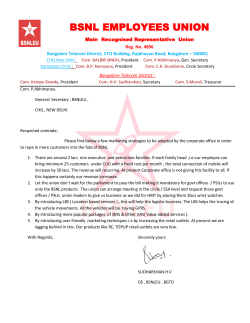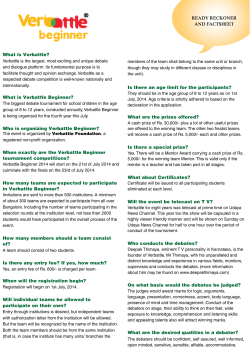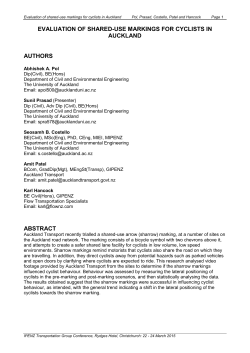
Bicycle crowdmap
bicycle crowdmap 1. topic 2. what Crowdsourcing is defined as the practice of obtaining needed services, ideas, or content by soliciting contributions from a large group of people and especially from the online community rather than from traditional employees or suppliers (MerriamWebster, 2012). Crowdmapping is an application of crowdsourcing data geospatially on a map. This project shares the application of crowdmapping, an emerging tool in participatory planning, to collect and analyze data for a bicycle mobility project in Bangalore, India. 3. where bicycle crowdmap bangalore apply crowdmapping tools bangalore, india Bicycle mobility projects stand to benefit from this technology as they depend on up-to-date field data for their success. Collecting crowdsourced geospatial and real time route data, reports on infrastructure quality and constructive user feedback lie at the heart of these attempts. Data collection in crowdmapping is different from the conventional method of one surveyor following cyclists. Rather, cyclists source their real time routes to the surveyor on a central shared map. Data was collected by engaging cyclists through an online base map. Quality and quantity of data collected is shared. Challenges faced in facilitating participation and checking data authenticity are discussed. Recommendations are made for a holistic design of future attempts at bicycle crowdmaps for cities. This project aims to encourage governments, planning bodies and researchers to widely apply this new tool for actively engaging bicyclists in contributing dynamic and up-to-date data. Bangalore is a ‘Million Plus City’ in southern India. It has a city population of 9588910 living in an area of 1,276 sq.km (Census of India, 2011). Increase in traffic has resulted in many negative externalities. Between 1999-2009 there was a 26.3% increase in road accidents (Comprehensive Traffic and Transport Plan, 2011). The air quality index for 15/16 stations was found to be greater than 100 indicating severe pollution. In this light of the above an alternate scenario which promotes public transport and active modes of transport should be high on the priority of local authorities. Crowdmapping is an attepmt to realize where the trips are generating and ending. Also, to gather information on defunct infrastructure, problem points etc. All this from the first hand users i.e the bicyclists. 4. who 4.1 target group 4.2 respondent profile The map was popularized on social media sites aimed at cyclists in Bangalore. A group of 5716 people was targeted for this project. It was difficult to know how many members viewed the post for participation. However, a safe assumption of 1/3 of the group being active and viewing the post can be made. This makes for approximately 1905 views. Besides collecting route information, the users participated in sharing basic demographic and route quality information. The aim was to understand who was participating and their basic bicycling preferences. Of the 50 respondents who participated in the survey, the following data was gathered: Target Group Platform Group Size Bangalore Biker’s Club Praja Ride a Cycle Foundation Bangalore Bicycle Commuters Google Groups Facebook Facebook 4784 Facebook 53 514 376 5716 Following the publicity on social media sites, 103 users logged on to the crowdmap. Out of these, 90 cyclists actively contributed by recording their routes, sharing infrastructure points or problems areas on the map. Cyclists contributed 50 routes, 8 problem points, 10 repair stations, 8 parking station and 14 photographs. 4.7% 57% respondents found the of the initial target group ended up actively con- riding environment to be avertributing to the mapping efforts age 4.3 data collected A total of 470 km of routes were recorded on the map. Besides routes, users also shared images of routes and marked problem points. Based on user inputs, the point category was further elaborated to include parking spots and repair stations. The data collected can be seen on the maps alongside. Bike routes Bicyclist crowsourced data on crowdmap 5. how 6. final product 7. conclusion Besides popularising the project on social media sites, it was important to introduce incentives for participation. A tee-shirt was offered as prize to the maximum contributor. It was also important to revisit the social media pages regularly and encourage participation by starting a discussion or explaining the project better. The map was popularized on social media sites aimed at cyclists in Bangalore. A group of 5716 people was targeted for this project. It was difficult to know how many members viewed the post for participation. However, a safe assumption of 1/3 of the group being active and viewing the post can be made. This makes for approximately 1905 views. Data collected through crowdmapping has been analysed to derive basic user profile. http://wikimapping.com/wikimap/ Bangalore-Biking-and-Walking. html#.Uy2fD6hdXw8 It is an interesting time in mobility planning as cities bring the focus back to improving bicycle and pedestrian environment. Crowdmapping route data for mobility projects promises to be an engaging tool for this process. Besides increasing awareness about such projects it helps create a participatory platform for future interventions. Many smartphone and internet based applications already exist and are contributing in this. However the challenge in the near future remains to elicit a good response from users and encourage planning agencies and researchers to adopt this as a serious tool to connect to its citizens.
© Copyright 2025

